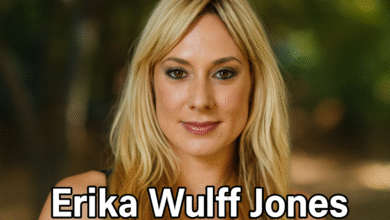When Parents Disagree: Creative Solutions Beyond Custody Battles

The traditional adversarial approach to custody disputes has left countless families emotionally and financially devastated, with children often bearing the heaviest burden. Courtroom battles that pit parent against parent create winners and losers in situations where everyone—especially children—needs to win. Fortunately, a revolution in family law is providing alternatives that prioritize children’s wellbeing while respecting both parents’ roles. These creative solutions transform potential battlegrounds into opportunities for collaborative problem-solving, offering hope to families navigating the challenging terrain of separation and divorce.
Collaborative Law: Restructuring the Conversation
Collaborative law represents a fundamental reimagining of how legal professionals can support families through separation. In this model, both parents retain specially trained collaborative lawyers who commit to reaching agreement without court intervention. If the collaborative process fails and litigation becomes necessary, both lawyers must withdraw, creating powerful incentives for everyone to work toward resolution.
The collaborative process typically involves a team of professionals beyond just lawyers. Mental health professionals help address emotional dynamics and support children’s adjustment. Financial specialists ensure that economic decisions are based on accurate information and realistic projections. Child specialists give voice to children’s needs and preferences without putting them in the position of choosing between parents. This interdisciplinary approach addresses the multiple dimensions of family restructuring that pure legal advocacy cannot reach.
Unlike traditional negotiation, where lawyers might strategically withhold information or stake out extreme positions, collaborative practice requires complete transparency and good-faith problem-solving. Parents and professionals work together in a series of meetings, identifying interests, generating options, and crafting solutions that address everyone’s core concerns. The focus shifts from winning to problem-solving, from positions to interests, from past grievances to future functionality.
Family lawyers in Melbourne who practice collaborative law report that the process often strengthens co-parenting relationships rather than destroying them.https://westernbusiness.co.uk/ learn communication skills, develop problem-solving strategies, and establish frameworks for addressing future disagreements. Children benefit from seeing their parents work together productively, even while separating, providing models for healthy conflict resolution.
Mediation: Finding Middle Ground
Mediation offers another powerful alternative to custody litigation, particularly for parents who want to maintain control over their family’s decisions. A neutral mediator facilitates discussions between parents, helping them identify common ground, explore creative solutions, and reach agreements that both can accept. Unlike judges, mediators don’t impose decisions—they empower parents to create their own solutions.
The flexibility of mediation allows for creative custody arrangements that courts might never order. Parents might agree to “nesting” arrangements where children stay in one home while parents rotate in and out. They might create detailed but flexible schedules that account for work travel, extended family relationships, or children’s activities. They might establish trial periods for different arrangements, agreeing to reassess and adjust based on actual experience rather than theoretical concerns.
Mediation also addresses issues beyond basic custody and visitation that courts often overlook. Parents can establish agreements about education choices, religious upbringing, extracurricular activities, and healthcare decisions. They can create communication protocols, establish boundaries around new relationships, and plan for future milestones like graduations, weddings, or grandchildren. This comprehensive approach prevents future conflicts by addressing potential issues proactively.
The mediation process itself can heal relationships damaged by separation. As parents work together to solve problems, they often rediscover their ability to cooperate for their children’s benefit. The mediator helps them separate their partner relationship, which is ending, from their co-parent relationship, which must continue. This distinction allows parents to move forward productively even when romantic reconciliation isn’t possible.
Parenting Coordination: Ongoing Support
For high-conflict families who need ongoing support beyond initial agreement, parenting coordination offers a valuable resource. Parenting coordinators are professionals—often mental health practitioners or family lawyers—who help implement custody agreements and resolve day-to-day disputes without returning to court. They serve as neutral decision-makers for issues within their defined scope, providing quick resolution to prevent conflicts from escalating.
Parenting coordinators might help parents navigate disagreements about schedule changes, extracurricular activities, or medical decisions. They can facilitate communication when direct interaction becomes too charged. They might educate parents about child development, helping them understand how their conflict affects their children and motivating change. Some parenting coordinators have authority to make binding decisions on specific issues, while others make recommendations that parents can accept or challenge in court.
This ongoing support proves particularly valuable during transition periods when families are adjusting to new arrangements. The parenting coordinator helps establish new patterns, troubleshoot problems, and prevent minor disagreements from becoming major conflicts. As families stabilize, the coordinator’s involvement can decrease, but they remain available for future challenges that inevitably arise as children grow and circumstances change.
Child-Inclusive Practices: Centering Young Voices
Modern approaches to custody disputes increasingly recognize children as stakeholders whose voices deserve consideration, not property to be divided. Child-inclusive practices involve children appropriately in the process, ensuring their needs and preferences inform decisions without burdening them with adult responsibilities.
Child consultants or child specialists meet with children in age-appropriate ways to understand their experiences, concerns, and wishes. These professionals help children express their feelings safely, ensure their voices are heard, and advocate for their interests throughout the process. Importantly, they shield children from the pressure of choosing between parents by presenting children’s perspectives as one factor among many that parents must consider.
Some innovative programs bring children and parents together in therapeutic settings to address the impact of separation directly. These interventions help children express their feelings to both parents simultaneously, preventing the triangulation that often occurs when children communicate separately with each parent. Parents gain direct insight into their children’s experiences, often motivating them to reduce conflict and prioritize children’s wellbeing.
Restorative Justice Approaches
Some jurisdictions are experimenting with restorative justice principles in family law, focusing on healing relationships rather than determining fault. These approaches bring extended family members and support networks into the conversation, recognizing that custody disputes affect entire family systems, not just nuclear families.
Family group conferences allow extended family members to participate in creating care plans for children. Grandparents, aunts, uncles, and family friends might offer support, provide respite care, or help maintain stability during transitions. This expanded support network benefits children while reducing pressure on parents navigating their own emotional challenges.
Circle processes drawn from Indigenous traditions create safe spaces for all affected parties to share their perspectives, express their needs, and work toward healing. These processes acknowledge the grief, anger, and fear that accompany family breakdown while focusing on future relationships rather than past grievances. They’re particularly effective in addressing the cultural and spiritual dimensions of family life that legal processes often ignore.
Technology-Enabled Solutions
Digital tools increasingly support creative custody solutions, particularly for families separated by distance or those struggling with communication. Co-parenting apps provide neutral platforms for sharing schedules, expenses, and information about children. They document communications, reducing disputes about what was said or agreed. Some apps include features like expense tracking, photo sharing, and messaging systems that maintain boundaries while ensuring necessary communication.
Virtual visitation technology enables meaningful parent-child connection when physical presence isn’t possible. Video calls, online gaming, and shared digital activities help maintain relationships across distances. Some custody agreements now include provisions for virtual visitation, recognizing its value in maintaining parental bonds.
Online dispute resolution platforms offer accessible, affordable alternatives to court proceedings for resolving custody disagreements. Parents can engage mediators or arbitrators remotely, reducing costs and logistical challenges. These platforms particularly benefit rural families or those with limited resources who might otherwise struggle to access alternative dispute resolution services.
The Transformation
The landscape of custody dispute resolution is transforming, offering families alternatives to the destructive battles that have characterized divorce for generations. From collaborative law to mediation, from parenting coordination to child-inclusive practices, these creative solutions prioritize children’s wellbeing while respecting both parents’ important roles.



